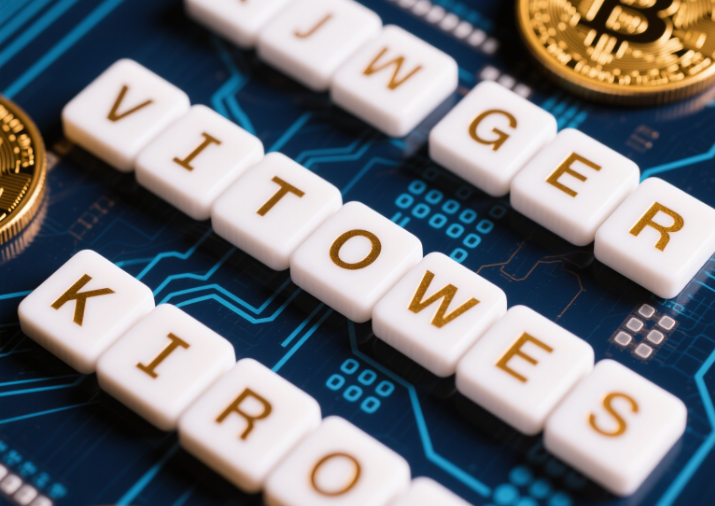Short Title: “Avalanche (AVAX): The Future of Blockchain Scalability and DeFi”
Avalanche, the high-performance blockchain platform, has emerged as a game-changer in the decentralized finance (DeFi) and Web3 ecosystems. Designed to address the scalability, security, and interoperability challenges of traditional blockchains, Avalanche offers a unique architecture that combines speed, flexibility, and enterprise-grade features. This article explores Avalanche’s technical innovations, its role in DeFi, ecosystem growth, and future potential, positioning it as a leader in the evolving blockchain landscape.
1. Technical Architecture: Speed and Scalability Redefined
Avalanche’s core strength lies in its Avalanche Consensus Protocol, a novel approach that enables near-instant transaction finality (under 2 seconds) and high throughput (up to 4,500 transactions per second) . Unlike Ethereum’s Proof-of-Work (PoW) or Solana’s Proof-of-History (PoH), Avalanche uses a Proof-of-Stake (PoS) mechanism with a subnetwork architecture called Subnets, allowing users to create custom blockchains tailored to specific use cases.
Key technical features include:
- Three-Chain Structure:
- X-Chain: Manages asset creation and transfers.
- C-Chain: Supports EVM-compatible smart contracts, enabling seamless integration with Ethereum dApps.
- P-Chain: Coordinates validators and facilitates Subnet creation.
- Interoperability: Avalanche’s Interchain Messaging (ICM) protocol enables cross-chain communication, allowing assets and data to flow between different blockchains .
- Cost Efficiency: The recent Avalanche9000 upgrade reduced transaction fees by 96% and lowered the cost of deploying new blockchains by 99.9%, making it accessible to developers and enterprises .
2. DeFi Dominance: A Thriving Ecosystem
Avalanche has become a hotspot for DeFi innovation, attracting projects that leverage its speed and low fees. With a total value locked (TVL) exceeding $42 billion in 2025 , it rivals Ethereum and Solana in DeFi activity. Key projects include:
- Trader Joe: A decentralized exchange (DEX) with over $1 billion in daily trading volume, offering yield farming and liquidity pools.
- Benqi: A lending protocol supporting cross-chain assets like ETH and BTC.
- Aave: One of the largest DeFi platforms globally, which expanded to Avalanche to tap into its scalability.
Avalanche’s C-Chain compatibility with Ethereum’s Virtual Machine (EVM) allows developers to port existing Ethereum dApps with minimal effort, accelerating ecosystem growth. Additionally, its Subnets enable projects like DeFi Kingdoms (a GameFi platform) to operate independently while sharing security with the mainnet.
3. Enterprise Adoption and Real-World Asset Tokenization
Avalanche’s enterprise-friendly features are driving adoption in traditional finance. Partnerships with institutions like BlackRock, Franklin Templeton, and Morgan Stanley highlight its role in tokenizing real-world assets (RWAs) . For example:
- JPMorgan’s Onyx: Uses Avalanche to settle tokenized securities across borders.
- Sumitomo Mitsui Banking Corporation (SMBC): Develops a 合规 stablecoin for corporate payments .
- Avalanche’s Retro9000 Program: A $40 million initiative to fund developers building on its network, including projects focused on tokenized assets and institutional solutions .
These collaborations demonstrate Avalanche’s potential to bridge traditional finance and Web3, offering secure, transparent, and efficient infrastructure for asset management.

4. Challenges and Competition
While Avalanche excels in scalability, it faces competition from other high-performance chains:
- Solana: Known for its speed (50,000 TPS) but criticized for centralization risks.
- Polygon: Focuses on Ethereum scaling via sidechains and zk-rollups.
- Ethereum 2.0: Gradual upgrades aim to improve scalability but lag behind Avalanche’s current capabilities.
Avalanche’s unique selling points include subsecond finality, customizable Subnets, and enterprise-grade security, which position it as a versatile platform for both DeFi and institutional use. However, it must address challenges like network decentralization and regulatory compliance to maintain long-term growth.
5. Future Outlook: Innovation and Growth
Avalanche’s roadmap includes several game-changing initiatives:
- AvalancheAI: A 2025 launch targeting the $15 trillion AI market, integrating blockchain and AI for decentralized data governance .
- Interoperability Expansion: Partnerships with Chainlink and Cosmos enhance cross-chain capabilities, enabling seamless asset transfers between Avalanche and other networks .
- Community Incentives: The Avalanche Rush program rewards users for staking AVAX and participating in ecosystem projects, fostering engagement.
Analysts predict AVAX could reach $62.89 by 2025 and $112.44 by 2030 as adoption accelerates . With a strong developer community, institutional backing, and continuous innovation, Avalanche is well-positioned to lead the next wave of blockchain adoption.
Conclusion
Avalanche’s combination of speed, scalability, and interoperability makes it a powerhouse in the blockchain space. Whether supporting DeFi protocols, enterprise solutions, or AI integration, its architecture offers a future-proof foundation for Web3. As the ecosystem grows and partnerships deepen, Avalanche is set to redefine how we transact, invest, and interact with digital assets. For investors and developers, AVAX represents not just a cryptocurrency but a gateway to the next generation of decentralized innovation.
For the latest updates on Avalanche and DeFi trends, visit Bitora









Leave A Reply